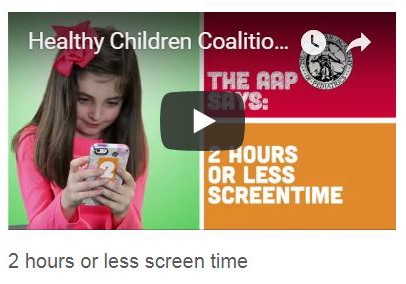March is Nutrition Month and we challenge you to track your 5-2-1-0! Take the Healthy Habits Challenge to see how many healthy habits you can practice during Nutrition Month. Track your progress for a chance to win!
Week 1 (Monday, March 2 – Saturday, March 7): Week 1 Healthy Habits Challenge
Week 2 (Monday, March 8 – Saturday, March 14): Week 2 Healthy Habits Challenge
Week 3 (Monday, March 15 – Saturday, March 21):Week 3 Healthy Habits Challenge
Week 4 (Monday, March 22 – Saturday, March 28): Link will be posted at the beginning of Week 4 |
5-2-1-0 is a nationally recognized obesity prevention program which originated in Maine. The goal of 5-2-1-0 is to increase physical activity and healthy eating for children from birth to 18 through policy and environmental change. 5-2-1-0 targets six settings to reach families where they live, learn, work and play to reinforce the importance of healthy eating and physical activity.
Skagit County’s 5-2-1-0 program is coordinated by Carolyn Conner, RD, through Nutrition First Washington. For more information and to find out how to be involved – contact Carolyn Conner at info@nutritionfirstwa.org or 206-450-6139.

|
 A diet rich in fruits and vegetables provides vitamins and minerals, important for supporting growth and development, and for optimal immune function in children. High daily intakes of fruits and vegetables among adults are associated with lower rates of chronic diseases such as heart disease, stroke, high blood pressure, diabetes, and possibly, some types of cancers. Emerging science suggests fruit and vegetable consumption may help prevent weight gain, and when total calories are controlled, may be an important aid to achieving and sustaining a healthy weight. A diet rich in fruits and vegetables provides vitamins and minerals, important for supporting growth and development, and for optimal immune function in children. High daily intakes of fruits and vegetables among adults are associated with lower rates of chronic diseases such as heart disease, stroke, high blood pressure, diabetes, and possibly, some types of cancers. Emerging science suggests fruit and vegetable consumption may help prevent weight gain, and when total calories are controlled, may be an important aid to achieving and sustaining a healthy weight.

Watching too much television (TV) and use of other screen media is associated with an increased prevalence of overweight and obesity, lower reading scores, and attention problems. The American Academy of Pediatrics (AAP) recommends no more than 2 hours of screen time a day and that children under age 2 not watch any TV or other screen media. The AAP recommends keeping the TV and computer out of the bedroom.

Regular physical activity is essential for weight maintenance and prevention of chronic diseases such as heart disease, diabetes, colon cancer, and osteoporosis. While most school age children are quite active, physical activity sharply declines during adolescence. Children who are raised in families with active lifestyles are more likely to stay active as adults than children raised in families with sedentary lifestyles.
 Sugar-sweetened beverage consumption has increased dramatically since the 1970s; high intake among children is associated with overweight and obesity, displacement of milk consumption, and dental cavities. The AAP recommends that children 1–6 years old consume no more than 4–6 ounces of 100% juice per day and youth 7–18 years old consume no more than 8–12 ounces. Water provides a low-cost, zero-calorie beverage option and is a healthy alternative to sugary drinks. Sugar-sweetened beverage consumption has increased dramatically since the 1970s; high intake among children is associated with overweight and obesity, displacement of milk consumption, and dental cavities. The AAP recommends that children 1–6 years old consume no more than 4–6 ounces of 100% juice per day and youth 7–18 years old consume no more than 8–12 ounces. Water provides a low-cost, zero-calorie beverage option and is a healthy alternative to sugary drinks.
* Screen time includes time spent watching television, playing video games, using a computer, smartphone, and tablet. Recreational screen time is screen time used for non-educational purposes.
|











 A diet rich in fruits and vegetables provides vitamins and minerals, important for supporting growth and development, and for optimal immune function in children. High daily intakes of fruits and vegetables among adults are associated with lower rates of chronic diseases such as heart disease, stroke, high blood pressure, diabetes, and possibly, some types of cancers. Emerging science suggests fruit and vegetable consumption may help prevent weight gain, and when total calories are controlled, may be an important aid to achieving and sustaining a healthy weight.
A diet rich in fruits and vegetables provides vitamins and minerals, important for supporting growth and development, and for optimal immune function in children. High daily intakes of fruits and vegetables among adults are associated with lower rates of chronic diseases such as heart disease, stroke, high blood pressure, diabetes, and possibly, some types of cancers. Emerging science suggests fruit and vegetable consumption may help prevent weight gain, and when total calories are controlled, may be an important aid to achieving and sustaining a healthy weight.

 Sugar-sweetened beverage consumption has increased dramatically since the 1970s; high intake among children is associated with overweight and obesity, displacement of milk consumption, and dental cavities. The AAP recommends that children 1–6 years old consume no more than 4–6 ounces of 100% juice per day and youth 7–18 years old consume no more than 8–12 ounces. Water provides a low-cost, zero-calorie beverage option and is a healthy alternative to sugary drinks.
Sugar-sweetened beverage consumption has increased dramatically since the 1970s; high intake among children is associated with overweight and obesity, displacement of milk consumption, and dental cavities. The AAP recommends that children 1–6 years old consume no more than 4–6 ounces of 100% juice per day and youth 7–18 years old consume no more than 8–12 ounces. Water provides a low-cost, zero-calorie beverage option and is a healthy alternative to sugary drinks.